The road was steep. Trees grew on either side and branches loomed overhead. A utility vehicle had stopped on the steepest section. The nose faced uphill. The Editor and I were travelling downhill along the same road. Dinner at the local pub was the destination. If I’d known the people in the utility vehicle, I would have stopped to see if they’d needed some help. The driver looked agitated and angry, buzzing around like a blowfly. He frantically waved me past. The passenger of the utility vehicle appeared despondent.
I slowed the Dirt Rat Suzuki as I passed, and it was then that I noticed that the utility tray was full of firewood. And they were also attempting to pull a full trailer load of firewood up that steep section of road. Then I guess something went horribly wrong with the vehicle.
Hours later, the vehicle and trailer had disappeared. There were indications that the vehicle and trailer had parted company. It was the second time I’d encountered a similar vehicle in trouble at that location. A bloke who runs the local earthmoving business, said to me a decade ago, that if his dump truck was going break an axle around these parts, it would happen at that spot. Perhaps the location carries a curse? Curse or not, the pub feed was excellent.
The Dirt Rat Suzuki gets used to pull heavy loads of materials back up the steep road regularly. However, there is no chance in hell that the Dirt Rat could ever pull the huge load of firewood that the diesel powered utility vehicle was attempting (and failing) to move. It is of interest that the earthmoving dudes truck also ran on diesel, as did the other vehicle stuck at the same location a few years ago.
The other day I’d been contemplating the subject of diesel fuel. Just in case you hadn’t heard, there is a worldwide shortage of an additive used with modern diesel engines which makes those engines run cleaner. It’s now in short supply for the exact same reasons that mineral fertilisers are in short supply. Urea! Eureka! In fact, the additive probably could be used as fertiliser given that it is mostly refined urea and deionised water.
You can listen to a brief audio discussion on the implications of the shortage of the fuel additive at the link here: https://www.abc.net.au/news/2021-12-12/what-is-adblue-and-why-could-an-international/13673658
I didn’t speak with the bloke who’s utility vehicle had come to an unexpected stop. He didn’t look as if he wanted any assistance. An interesting aspect of living in a rural area is that a lot of social interaction arrives via chance conversations. In a city a person can be anonymous, but in a rural area you’re usually known and conversely, you know other people in the local area. It’s sort of like social media, but better.
Anyway, as events turned out I had a chance opportunity to speak with a local mechanic last week. I asked him about the additive. The mechanic said that the diesel engines will possibly run without the additive because the stuff gets injected into the exhaust gases, and is not part of the combustion process (i.e the process that makes engines work). But the lack of additive will show up in the diesel exhaust, which will get really dirty, like stinky thick black belching truck smoke was way back in the good old days.
And the chat moved on to the wider subject of modern diesel engines. The mechanic mentioned that in an effort to make them run cleaner and with more power and torque (i.e. turning force of the engine), the diesel engines might not have the same lifespan that they once had. The increase in power is great for pulling huge loads of firewood up a steep section of road (unless something goes horribly wrong). But on the other hand the increased complexity of the newer motors will possibly increase the probability of something going wrong.
Technology has that affect in that it can solve one problem, only to then create other problems. In this case, diesel engines produce some nasty and visible exhaust gases. The solution: inject a refined urea based additive into the exhaust gases to make them relatively cleaner. Plenty of cars and trucks on the roads with diesel engines use the additive, and so the additive is a good thing. Voilà! But wait, there’s more to the story: urea has an alternative use as a fertiliser.
And therein lies the problem. The land of stuff is the place where Australia sources most of its refined urea, and let’s not forget all of the other fertilisers sourced from that land. And the land of stuff has abruptly stopped the supply. Rightly or wrongly, due to internal supply concerns they wish to use the fertilisers for themselves in order to feed their own population. It’s almost as if the technology inadvertently posed the predicament: Do we have cleaner emissions for diesel engines, or do we produce food to eat? Will we even have a choice?
I’m not proposing an answer to the questions. Time itself will provide the answers, but my gut feeling in the matter is not good. It would be nice if this were the only incidence with this type of predicament produced by the use of technology, but it doesn’t take too much effort to point out plenty of others, some of which take up plenty of space nowadays in the daily news.
About mid-week a huge storm rolled in from the Southern Ocean.

It has been a cold and damp spring and summer already, but for a few days the climate somehow managed to get even colder. We had the wood heater running for about two days. The farm was cold, the air was humid and thick low clouds ruled the skies. This year is a crazy growing season.
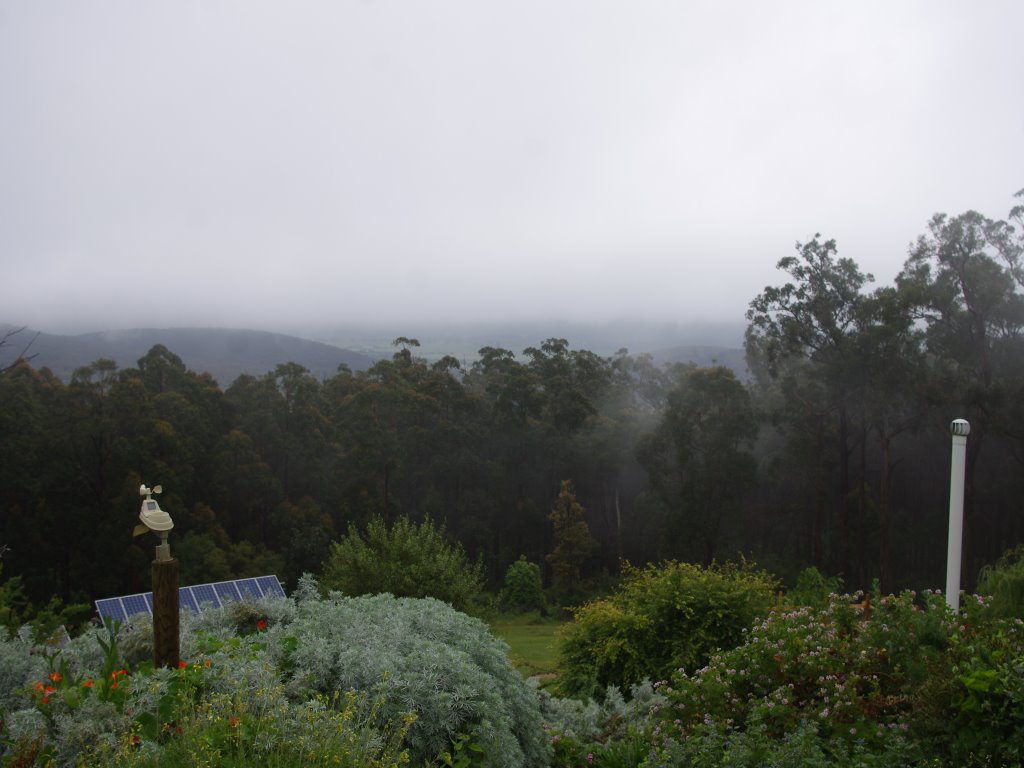
Friday morning was so wet and cold that we had trouble deciding whether to begin dismantling one of the sheds. The plan was to reuse the materials in that shed in the new and replacement shed. We toughened up and just began the work.

Observant readers will note that in the photo above I am wearing a thick windcheater to ward off the cold and damp. It is notable that the summer solstice is now less than two weeks away.
Materials are becoming expensive and hard to obtain down under, so there is no point wasting what you already have access to. Therefore the shed was very carefully dismantled. Some steel strapping and some screws where the heads had stripped or broken were a total loss, but other than those, everything else was recovered for reuse.

Dismantling a shed is done in the reverse procedure as to how it was constructed in the first place. In this instance, we began by removing the roof.
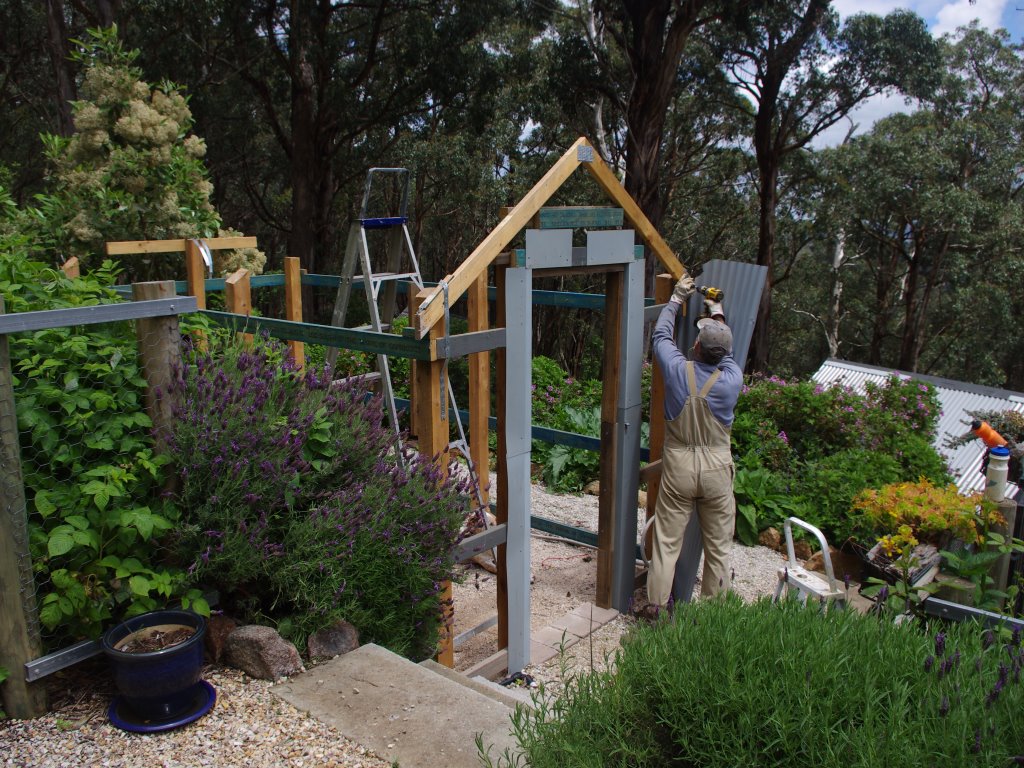
Even the timber posts were recovered. The posts are an aromatic local native timber known as cypress pine. They’re an excellent species because the timber contains an oil which prevents termite attack and protects the timber against decay. The posts had been set into water tight concrete many years ago, and the timber was pristine – and still smelled great.
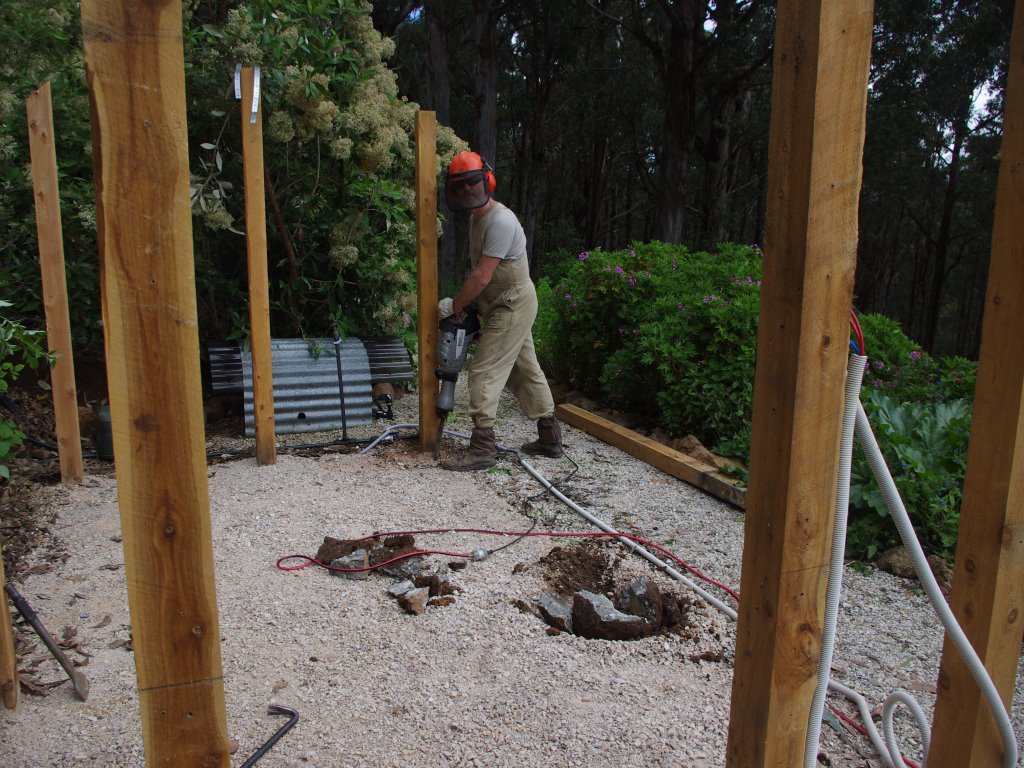
By the end of a very long work day, the shed had been dismantled.
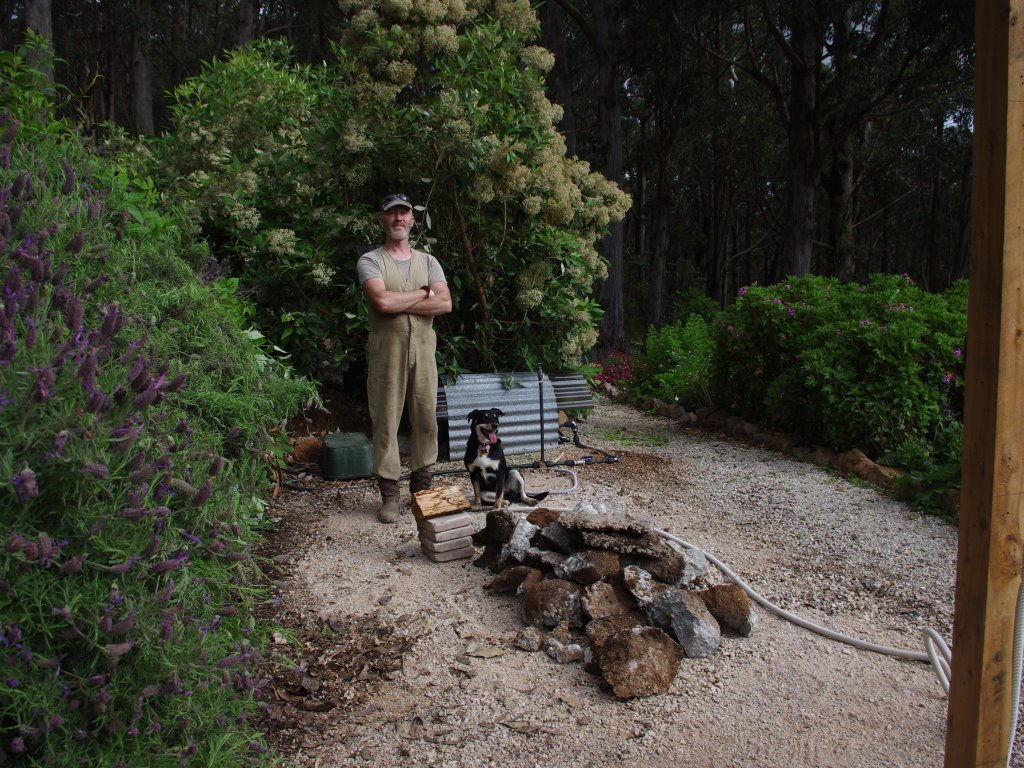
It took a few hours further work to move the materials down to the new shed site where they will be used. The power wheelbarrow was invaluable for this task.
Once the materials were on the new shed site, a few of the recovered timber posts were set into cement and used in the new shed.
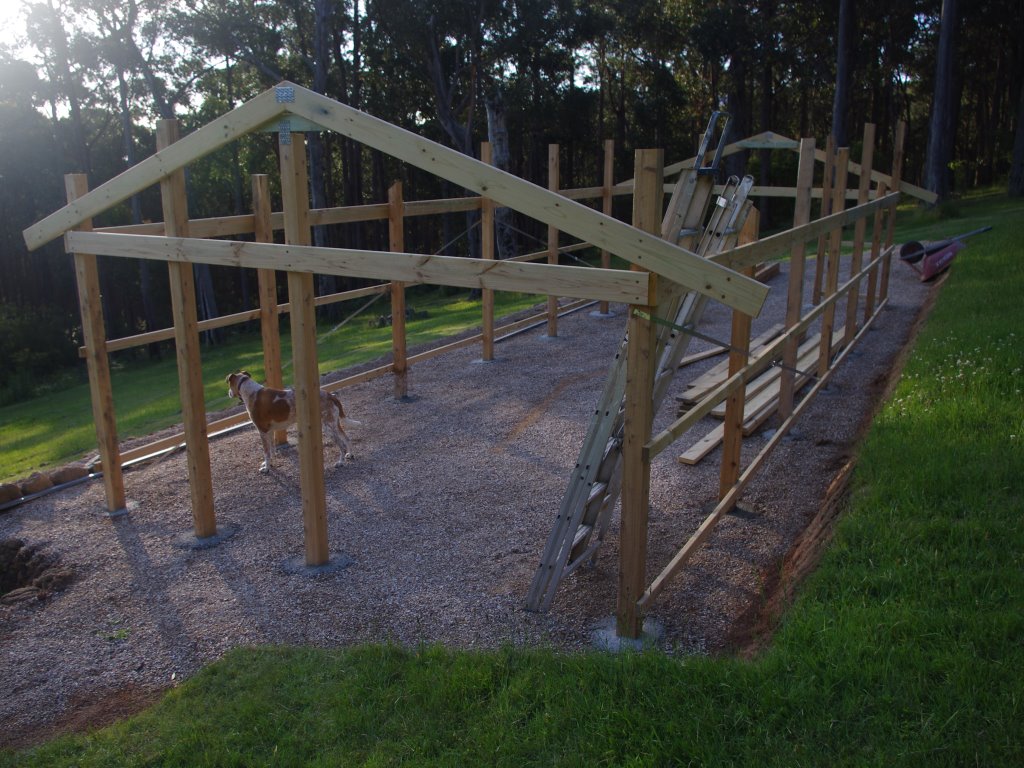
I’m really enjoying this shed project, and in a burst of enthusiasm, I made and then put into place about half of all of the roof trusses.
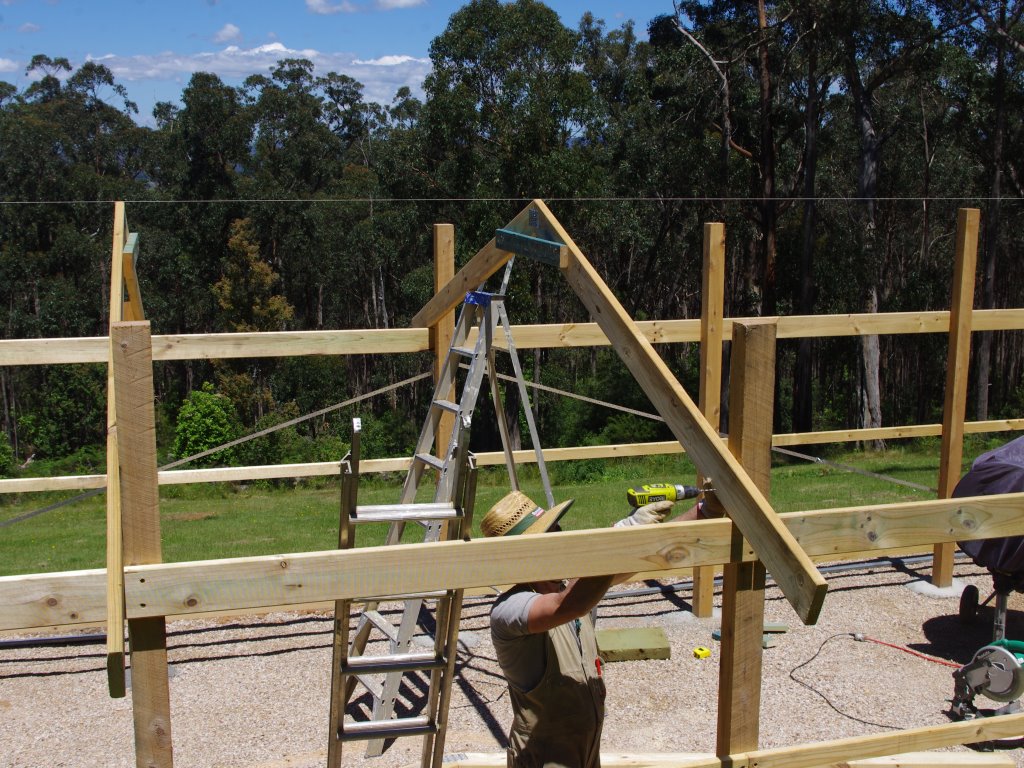
The Editor was busy that morning, and so I used a ladder to support the weight of the roof truss so that it didn’t inadvertently fall onto my head. Observant readers will note that in the photo above, I use a string line running between one end of the shed and the other so as to provide the exact placement for the centre position of the roof truss.

The growing season has been very difficult, however the Globe Artichokes have continued to give huge quantities of very tasty vegetables for many months now.
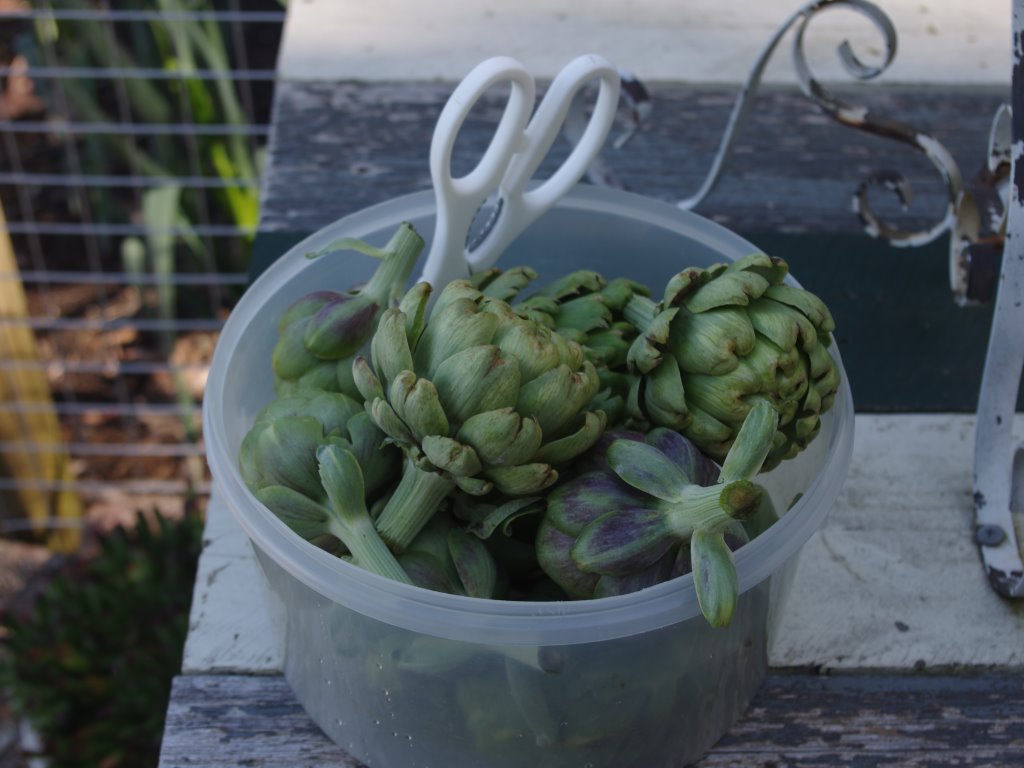
Onto the flowers:

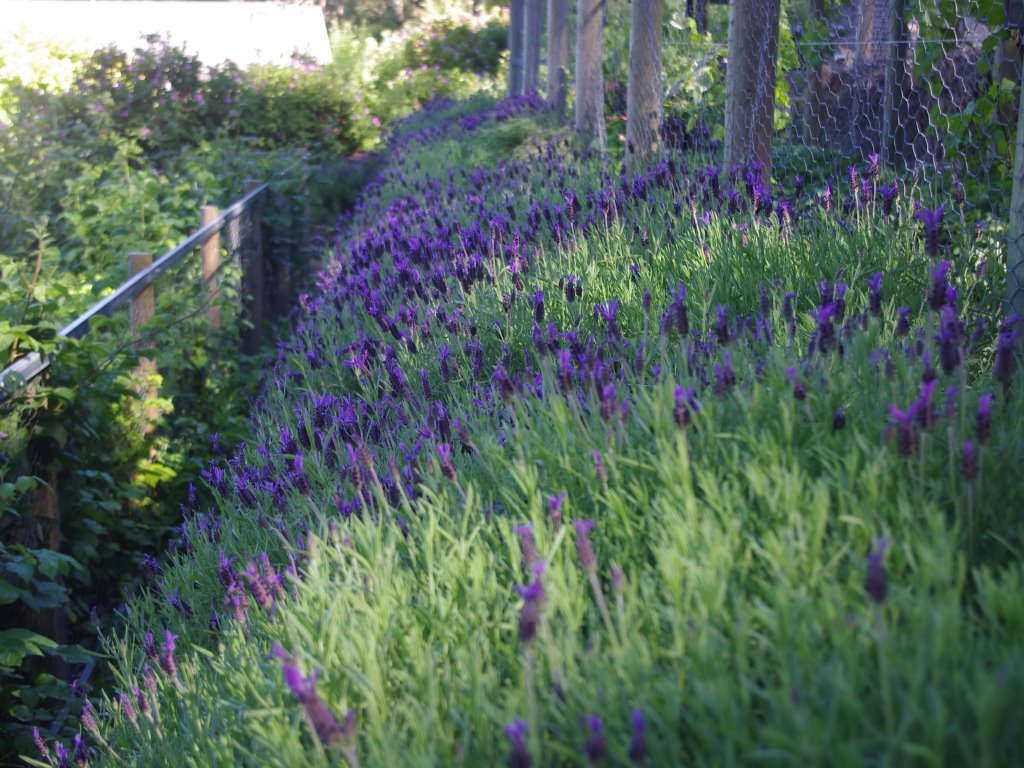




The temperature outside now at about 10.00am is 23’C (73’F). So far this year there has been 1,213.4mm (47.8 inches) which is up from last weeks total of 1,176.8mm (46.3 inches)
